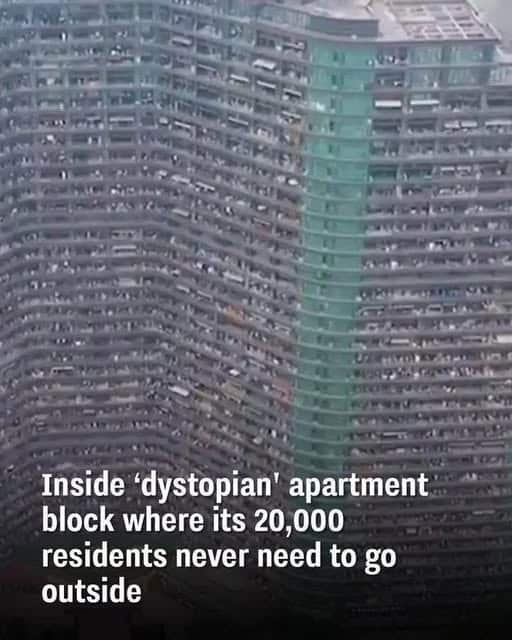Monthly rents range from the equivalent of $200 for a single, compact studio to about $600 for larger, more private units — a price that has made it especially attractive to young professionals, recent graduates, and remote workers. The building’s self-contained design caters to China’s increasingly transient urban class: people who prioritize convenience, affordability, and digital connectivity over traditional notions of home.
Every hallway buzzes with activity. Delivery drivers crowd the lobby. Residents ride up and down the endless elevator banks carrying groceries, laptops, or laundry. In the evening, the communal areas light up — noodle shops doing brisk business beside small karaoke lounges, barbershops next to cafés that double as coworking spaces.
But for all its efficiency, Regent International has become a lightning rod for debate. Critics describe it as “dystopian,” arguing that it represents the darker side of urban innovation — a world where convenience comes at the cost of privacy and connection to nature. Many of the units are windowless or have limited access to sunlight, and while some higher-end apartments include balconies, most residents live in spaces that are less than 400 square feet.
Urban planners have praised the project’s use of vertical space and sustainability measures, including energy-efficient systems, shared resources, and waste management solutions that minimize environmental impact. Still, concerns linger about the psychological toll of packing so many lives into one confined structure. Mental health experts have questioned whether the human need for community can truly thrive in such artificial environments.
Despite these concerns, many residents say the building has given them a sense of security and opportunity they couldn’t find elsewhere. “I can afford my own place without roommates, and everything I need is right here,” said one young designer living on the 22nd floor. “I save hours every day. It’s not lonely — it’s efficient.”
Others see it differently. “You feel like part of a system,” another resident explained. “Everyone is polite, but no one really knows each other. It’s convenient, but it’s not living — it’s existing.”
Architect Alicia Loo has defended the design, arguing that Regent International is not meant to replace traditional neighborhoods but to complement them. “Cities are evolving,” she said in an interview. “We can’t keep building out — we must build up. The challenge is to create vertical communities that work.”
The building has even become an online phenomenon. Videos of its endless corridors and vast atriums have gone viral on social media, with users alternately fascinated and horrified. Some call it a glimpse into the future of megacities; others, a warning.
What’s certain is that Regent International forces an uncomfortable question: how much personal space are people willing to sacrifice for convenience, affordability, and access?
As more cities around the world face housing shortages and soaring rents, the “vertical city” concept is gaining traction. For now, Regent International stands as both a triumph of design and a cautionary tale — a symbol of what happens when the dream of efficiency meets the limits of human comfort.
In Hangzhou’s glittering skyline, it shines like a promise and a paradox — a city within a building, where modern life is as compact, connected, and constrained as ever.

